The rise of DEXs (decentralized exchanges) has been impressive lately. Is Uniswap a DEX? Yes, and moreover, it’s a major player in this area. Uniswap is one of the most popular DEXs now, with a market cap of $3.83B, according to Coinbase.
If you’re looking how to create a DEX exchange like Uniswap, this article will be helpful. You will discover which features distinguish this exchange and its development process, which includes designing smart contracts and implementing the AMM (automated market maker) algorithms. You will also find out the challenges and things to think about in the process of developing a similar blockchain project. Let’s begin!
How to make a decentralized exchange (DEX): Highlights
Setting up a DEX requires a properly laid-out roadmap of strategy and implementation to come up with a secure and user-friendly platform. Among the major steps of how to create a DEX exchange is partnering with a reputed blockchain development company. Their experience will lead you to construct a robust DEX that will meet the needs of digital traders with the added advantages of decentralization. Here is a short outline to get you started:
Blockchain platform choose
To create DEX exchange, collaborate with your development team on the selection of a blockchain, such as Ethereum or Binance Smart Chain, which supports smart contracts.
Smart contracts development
Work together on writing and auditing smart contracts with expert developers for token swap and liquidity management, ensuring the code is transparent and works exactly as intended.
User-friendly interface design
Help create an intuitive interface that provides users with seamless trading experiences, thus making the platform user-friendly and fun to engage with.
Security implementation
Leverage the experience of the development company to make security a top priority, introduce intensive auditing, and have strong protection protocols for users’ money.
Diverse tokens support
Guided, allow permissionless listing of tokens. This increases the different types of users coming in, adding more liquidity to your exchange.
DEX market
Using insights from your development partners will enable one to make effective marketing strategies to promote your DEX and onboard users.
With these steps and partnering with a professional blockchain development company, you can create a decentralized exchange that truly empowers users and fosters a rich trading ecosystem. Leverage the transformative power of DEX and efficiently serve the changing needs of traders worldwide.
What are decentralized exchanges (DEXs)
A DEX is a cryptocurrency trading platform that functions without a central governing body. Unlike conventional exchanges, which are controlled by a central entity, DEXs leverage blockchain technology and smart contracts to enable direct P2P (peer-to-peer) transactions between users. This decentralized structure gives users more control over their crypto assets and typically offers enhanced privacy and security.
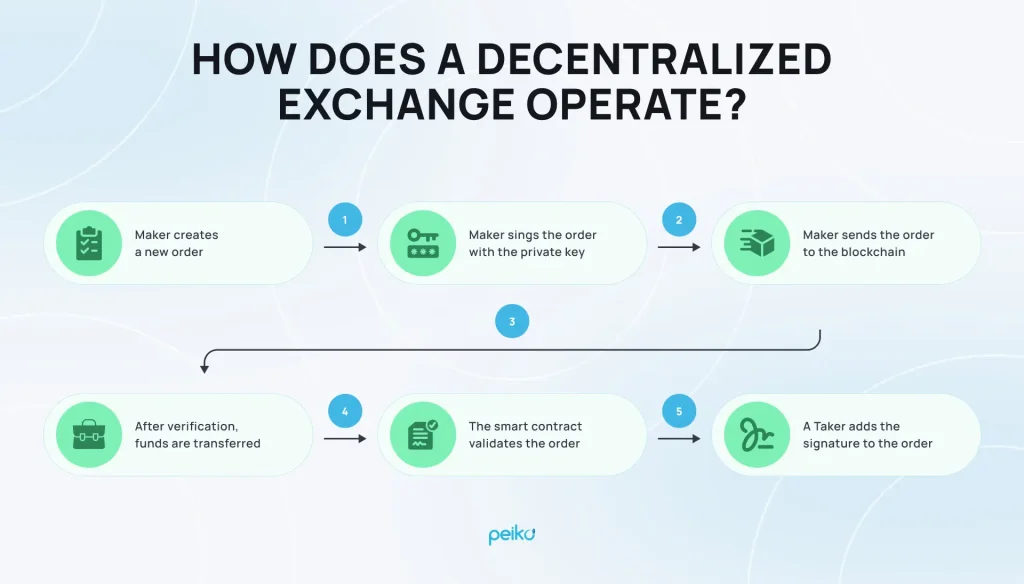
As reported by Coingecko, approximately 875 decentralized cryptocurrency exchanges are currently operating. The UniSwap DEX, encompassing versions V2 and V3, dominates the space with more than 50% of the total DEX trading volume, making it the largest DEX exchange crypto platform by a significant margin.
How does a DEX differ from a centralized exchange?
When evaluating decentralised exchange, it’s helpful to compare them with their centralized ones. Let’s consider the main characteristics of CEXs and DEXs.
| Characteristics | CEX | DEX |
|---|---|---|
| Decentralization | Controlled by a central governing body | Trades are executed via smart contracts with no intermediaries |
| Liquidity | Higher liquidity from central entities and institutional investors | Lower liquidity, provided by users |
| Anonymity | Requires KYC (know-your-customer) | Higher anonymity; typically, no KYC is needed |
| Asset custody | The exchange holds and controls assets | Users retain control and management of their own assets |
Advantages and disadvantages of DEXs
Crypto decentralized exchange comes with a set of advantages and challenges different from traditional centralized exchanges. Understanding these will be important for users seeking to navigate the evolving landscape of cryptocurrency trading.
DEX pros
- Improved privacy: DEXs do not typically require KYC, and hence people can trade without disclosing their personal details.
- Full control over assets: On a DEX, a user fully owns their cryptocurrency and fully controls it.
- Increased accessibility: DEXs allow permissionless token listings, thus allowing a greater variety of tokens to be traded without the need for pre-approval.
- Lower fees: Most DEXs charge lower transaction fees compared to centralized exchanges.
- No central authority: DEXs operate independently of a middleman or central operator, thus reducing the chance of manipulation and disruption because of regulatory actions.
DEX cons
- User responsibility: While users maintain ownership of their assets, this also means they bear the full responsibility for securing their private keys and wallets.
- Lower liquidity: Sometimes, DEXs have a problem with liquidity compared to centralized exchanges. Lower liquidity can mean higher slippage and difficulties with executing large trades.
- Complex user interfaces: Many DEXs have more intricate user interfaces, which could be intimidating to new users.
Why build a DEX?
The development of a decentralized exchange allows the entrepreneur and the developer to get into the cryptocurrency market, growing at an unimaginable scale. The most important benefit of developing a DEX is that it offers more privacy to the users. Providing a platform that respects user anonymity attracts those who value their data protection.
DEXs further promote easy access and, therefore, encourage innovation in cryptocurrencies. Permissionless token listing implies that aspiring projects and new tokens will have a place in the market without barriers imposed by centralized platforms. By and large, creating a DEX does much to find an equal and genuinely user-friendly platform in cryptocurrency trade. Such products are indispensable for anyone prepared to seize a financial future.

What is Uniswap and how does it work?
Uniswap is one of the best decentralized crypto exchanges that operates through an automated liquidity protocol. Launched in 2018 on the Ethereum blockchain, which is the second-largest cryptocurrency by market capitalization, Uniswap supports all ERC-20 tokens and integrates with various tools and wallets like the Bitcoin.com Wallet app and MetaMask.
As a DEX, Uniswap ensures that users maintain complete control over their funds, allowing them to trade without relinquishing their private keys. This contrasts with centralized exchanges, where a third party manages user funds, introducing a single point of failure.
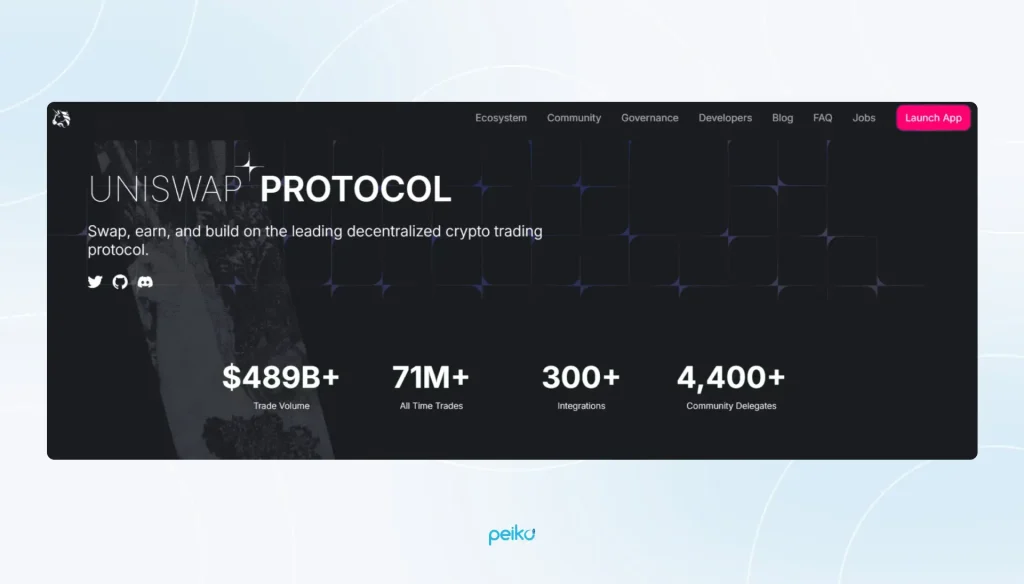
Uniswap functions as a crypto decentralized exchange by utilizing the AMM system. Unlike traditional exchanges that utilize order books to match buyers with sellers, the Uniswap decentralized exchange operates by applying liquidity pools.
These pools are established by liquidity providers who deposit pairs of tokens, such as ETH and USDT. In return, they receive LP (liquidity pool) tokens that represent their share of the pool and can be redeemed for their portion of the assets and accumulated fees.
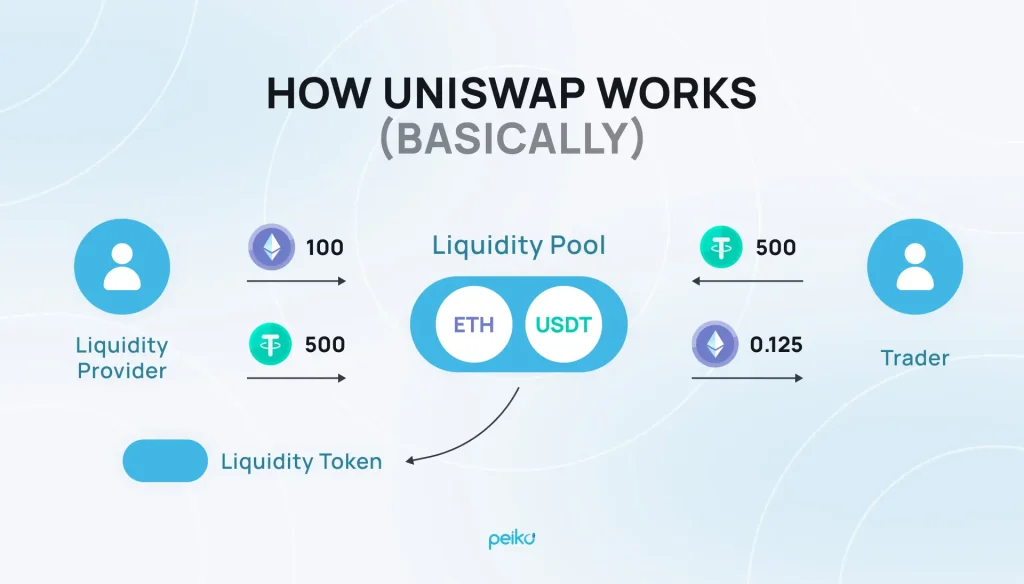
On Uniswap, token prices are determined through a constant product formula, x×y=k, where x and y are the quantities of the two tokens in the pool, and k remains constant. This formula ensures that the product of the token amounts remains unchanged, adjusting prices according to supply and demand to maintain liquidity and facilitate trades.
Uniswap imposes a fee on each transaction, which is distributed among liquidity providers. This fee structure incentivizes users to contribute liquidity to the pools, as they earn a share of the trading fees generated.
Furthermore, Uniswap operates under a decentralized governance model using the UNI token. Holders of UNI tokens can propose and vote on DEXtoken protocol crypto changes, including updates and new features, ensuring that the platform evolves according to the needs of its community.
Key features of Uniswap
Uniswap boasts several pivotal features that have greatly influenced the DeFi landscape:
AMM mechanism
Instead of relying on conventional order books, Uniswap uses an automated market maker system. This enables users to trade directly from their wallets using liquidity pools, eliminating slippage and avoiding the need to hold funds on the platform.
Decentralized governance
The UNI token empowers users with governance rights, letting them vote on important changes within the Uniswap ecosystem. Token holders also receive a share of the platform’s profits and can earn rewards by staking their UNI tokens.
Permissionless listing
Uniswap supports permissionless token listings, enabling any ERC-20 token to be traded on the platform without needing prior approval. This feature improves accessibility for a diverse range of crypto projects.
Constant product formula
The platform uses a constant product formula to execute trades and set costs. This algorithm maintains a staLiquidity provider (LP) feesble balance of tokens in liquidity pools, ensuring price consistency.
Liquidity provider (LP) fees
LPs supply assets to liquidity pools and receive a share of the trading fees as compensation. Moreover, they can engage in yield farming by staking their tokens in these pools to earn additional rewards.
Absence of KYC requirements
Uniswap operates without requiring KYC checks, which supports user privacy and makes it easier to access trading services.
How to develop a DEX platform like Uniswap?
Creating a decentralized exchange (DEX) platform like Uniswap involves strategic planning, technical expertise, and an understanding of the cryptocurrency market. Let’s explore two primary approaches—building a DEX from scratch or utilizing a Uniswap clone script—so that you can determine the best method to launch your platform.
Building a DEX from scratch
Building a DEX from scratch requires very important foundational decisions that will lay the bedrock for the success of your platform.
1. Select a blockchain platform
Choose a blockchain that supports smart contracts, such as Ethereum or Binance Smart Chain. This foundational choice will influence the transaction speed, cost, and scalability of your DEX.
2. Hire a development team
Partner with a skilled blockchain development company that has experience in DEX creation. Their expertise will be crucial in navigating the complexities of blockchain technology and ensuring a successful launch.
3. Design smart contracts
Develop and deploy smart contracts for managing token swaps, liquidity pools, and transactions. These contracts should be meticulously designed to ensure security, efficiency, and compliance with industry standards.
4. Create a user-friendly interface
To create DEX exchange that appeals to users, design an intuitive interface that facilitates easy navigation for users. A well-thought-out UI/UX design enhances user experience, encouraging more traders to engage with your platform.
5. Implement security measures
Incorporate robust security protocols, such as multi-sig wallets and two-factor authentication. Conduct thorough audits of smart contracts to identify and mitigate vulnerabilities that could jeopardize user funds.
6. Conduct extensive testing
Perform rigorous testing, including unit, integration, and security testing, to ensure the platform operates smoothly and securely. Testing is vital to uncover and address any potential bugs before launch.
7. Launch and market your DEX
Once completed, launch your DEX with a robust marketing strategy to raise awareness. Promote your platform through various channels, including social media, crypto communities, and influencers, to attract users and liquidity.
Using a Uniswap clone script
The Uniswap protocol has already shown its efficiency in terms of driving liquidity and user engagement. Using a clone script, you will be able to introduce essential features to your platform, including automated liquidity pools, token swaps, and an intuitive user interface that traders expect from modern exchanges.
Customization is where your clone script shines: you benefit from the reliable core features of Uniswap but also have the flexibility to tailor your DEX to meet specific business needs. Be it unique governance models, support of new token types, or enhanced security features-the ability for customization means you could differentiate your platform and set it apart.

Core components of a Uniswap-like DEX
When someone aims to create DEX exchange like Uniswap, it’s crucial to include fundamental components. Here’s an overview of them:
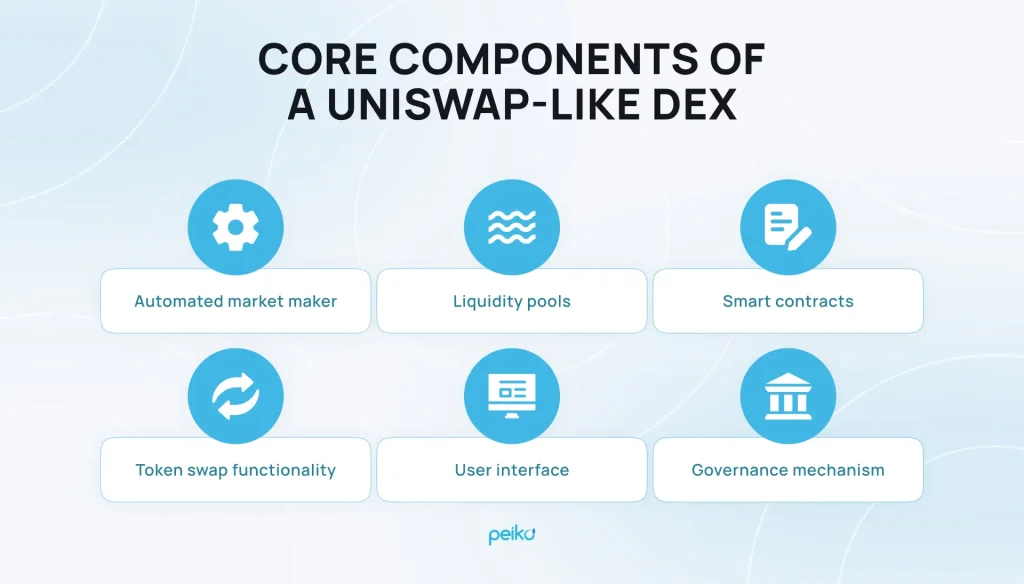
Automated market maker
Central to a Uniswap-like DEX is the automated market maker model, as we mentioned above. AMM uses liquidity pools and a mathematical formula, such as the constant product formula to set token prices. This system allows for continuous trading without needing a direct buyer or seller for each trade.
Liquidity pools
These pools are needed to enable trades on the DEX exchange. These pools consist of token pairs deposited by liquidity providers. In return for their deposits, liquidity providers obtain liquidity pool tokens that represent their share. The availability of these pools ensures sufficient trading depth and supports the AMM’s operations.
Smart contracts
These are automated and self-executing contracts coded to handle transactions, liquidity management, and fee distribution. They are crucial for executing trades and managing liquidity pools within the DEX, ensuring that operations are carried out according to predefined rules without the need for intermediaries.
Token swap functionality
The token swap feature allows users to exchange one cryptocurrency for another directly on the DEX exchange. This functionality interacts with the liquidity pools via smart contracts, enabling efficient and accurate trades based on the AMM’s pricing mechanisms.
User interface
A well-crafted user interface is a key feature for the best decentralized crypto exchanges. It should offer an intuitive platform for users to conduct trades, manage liquidity, and view their assets. The interface should present clear information on prices, liquidity, and transaction history to enhance the user experience (UX).
Governance mechanism
Decentralized governance mechanisms, typically through governance tokens, give the community a role in decision-making. These tokens enable crypto holders to propose and vote on DEXtoken protocol crypto changes, updates, and new features, ensuring that the platform adapts to its users’ needs and preferences.
Step-by-step guide to launching a DEX like Uniswap
So, how to create a decentralized cryptocurrency exchange? To create DEX exchange, consider several essential steps to ensure the platform’s functionality and success. The Peiko team can assist you with the implementation of each stage.
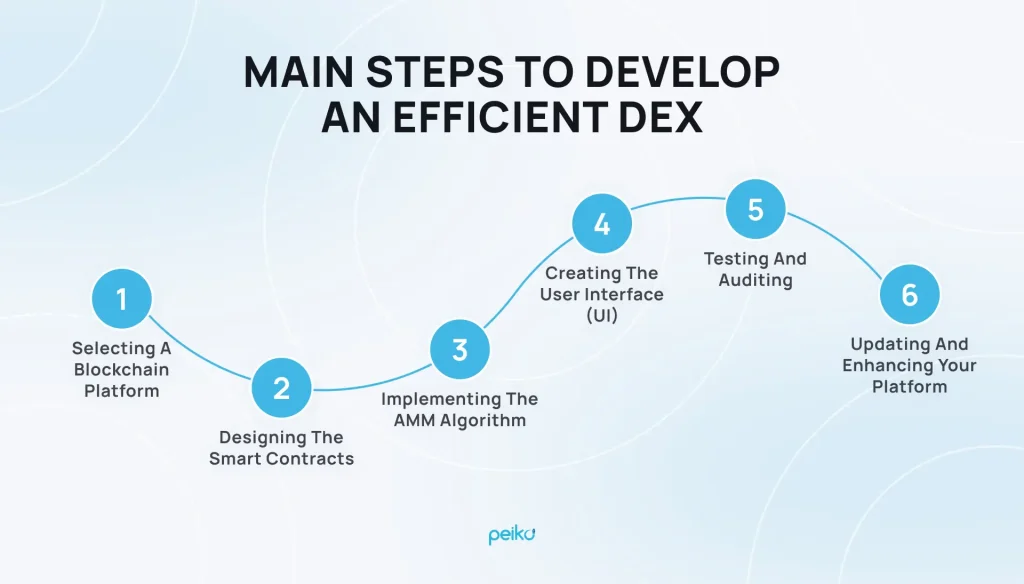
Step 1: Selecting a blockchain platform
The initial step is to choose a blockchain platform that meets your DEX’s requirements. This decision will influence aspects like scalability, security, and transaction costs. Options such as Ethereum, Binance Smart Chain, and layer-2 solutions like Arbitrum or Optimism are popular choices.
It is vital to evaluate factors such as transaction fees, network speed, and compatibility with other protocols to select the best platform for your needs. At this stage, we create a crypto decentralized exchange script.
Step 2: Designing the smart contracts
Creating smart contracts is essential for establishing the fundamental operations of the DEX exchange crypto platform. This development automates vital functions such as executing trades, managing liquidity pools, and distributing fees. It’s important that these contracts are secure, efficient, and designed to reduce gas costs, promoting scalability and ease of use.
Another key aspect is the distribution of fees. The smart contract determines transaction fees according to set percentages allocated for liquidity providers and governance activities. It must also guarantee precise collection and distribution of these fees, safeguarding against risks like front-running and fee manipulation.
Our experts can help to design these contracts to ensure they handle all required functions with precision and security. This includes coding the logic for token swaps, managing liquidity provider rewards, and calculating transaction fees accurately.
Step 3: Implementing the AMM algorithm
This algorithm plays a crucial role in how to create a decentralized cryptocurrency exchange, as it defines pricing and facilitating trades. Unlike traditional order books, it dynamically adjusts prices based on the supply and demand within liquidity pools. Choosing the right AMM model is essential to meet the specific objectives of the DEX.
Common options include the constant product formula (e.g., x×y=k, as seen in Uniswap), which maintains a consistent product of asset reserves during transactions. More sophisticated alternatives, such as constant sum formulas, hybrid curves, or tailored bonding curves, can enhance pricing and liquidity efficiency.
After selecting the suitable AMM model, it is directly incorporated into the smart contracts that manage token swaps. This requires implementing the logic to ensure accurate application of the pricing formula for each trade, with necessary adjustments to the token reserves in the liquidity pool. The smart contract must also handle exceptional scenarios, like low liquidity or large transactions, to mitigate issues such as significant slippage or unintended price distortions.
Depending on your DEX’s goals, we will help you pick an appropriate AMM model, such as the constant product formula or more complex alternatives. Our team will integrate this algorithm into your smart contracts to enable efficient token swaps and maintain liquidity across the platform.

Step 4: Creating the user interface (UI)
An intuitive and user-friendly interface will facilitate seamless interactions with your DEX. The design should include easy navigation for trading, liquidity management, and viewing transaction history.
Aim for a responsive design that provides a smooth user experience on different devices. Incorporate features like real-time price updates, wallet integration, and transaction tracking to enhance usability.
At Peiko, we use WalletConnect to enable secure support for multiple wallets, allowing users to connect through mobile or hardware options. To interact with the blockchain, we utilize libraries like Ethers.js and Web3.js, which facilitate token swaps, liquidity contributions, and transaction signing. These tools ensure seamless real-time communication with the DEX’s smart contracts, promoting secure and efficient on-chain transactions in a decentralized setting.
Step 5: Testing and auditing
Before deploying a DEX, thorough testing and auditing are essential to guarantee its security, reliability, and performance. This involves integration testing to confirm the interactions between smart contracts and other system components, unit testing to validate the accuracy of each contract’s logic, and stress testing to mimic high-traffic scenarios.
Automated static analysis tools like Slither and MythX can identify security vulnerabilities, such as re-entrancy issues and gas inefficiencies, within the contract code.
In addition to traditional testing methods, fuzz testing is implemented to provide random inputs that can reveal edge cases, potentially leading to failures or unexpected behaviors. This comprehensive testing approach, alongside rigorous code audits, is crucial for minimizing risks, detecting bugs, and ensuring a secure and efficient DEX deployment capable of safely handling real-world trading volumes.
Step 6: Updating and enhancing your platform
It’s important to continuously monitor and update your DEX after you learn how to create a decentralized cryptocurrency exchange. Thus, you’ll address any issues and integrate new features. Collect user feedback and analyze performance metrics to identify areas for improvement. Key performance indicators, including transaction throughput, gas efficiency, and user engagement, can inform enhancements to the platform.
To facilitate ongoing updates and improvements, upgradable smart contracts can be utilized, employing strategies like the proxy contract model or modular contract architectures. This allows for smooth updates to contract logic without the need to redeploy the entire system or disrupt the existing state and user funds.
Peiko’s expertise in DEXes development
We are your trusted partner for decentralized exchange development services and the creation of other blockchain projects. Our expertise as a leading blockchain development provider is confirmed by many well-known platforms like Clutch, TopDevelopers, and others. You can also find plenty of positive reviews from our previous customers on platforms like Upwork or GoodFirms.

Regarding DEX development, one prime example of our expertise is Vorpal. It is a high-performance decentralised exchange crypto platform created on the Binance Smart Chain. By forking PancakeSwap, we significantly improved the platform’s efficiency and established a solid groundwork for future innovations. We also integrated Binance Coin (BNB) to leverage Binance’s ecosystem benefits, enhancing the DEX’s overall performance and compatibility.
Our development efforts included incorporating advanced features such as token swapping, yield farming, and staking, alongside the integration of Web3 wallets to ensure a smooth user experience.
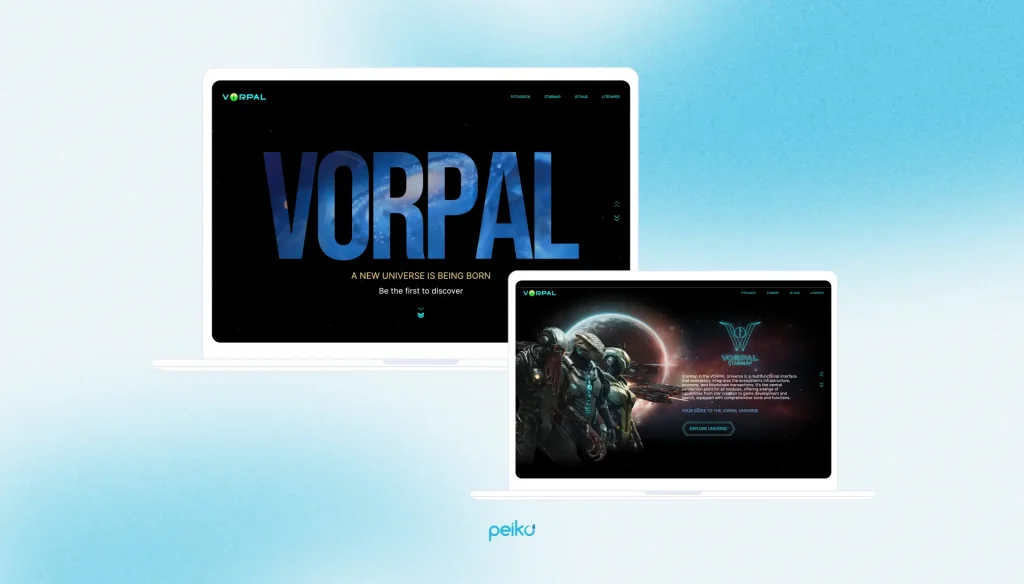
We focused on precise calculations for cryptocurrency earnings and optimized smart contracts to enhance both security and operational efficiency.
The result is a robust and user-friendly DEX that improves trading and investment experiences with its extensive features and drives revenue for the owner. If you need a reliable and efficient DEX, choose our team to help.
Conclusion
Decentralised exchange platforms, like Uniswap, look very promising for the business. Even though now decentralized exchanges are very popular among users in the crypto space.
Experienced developers will help you pick the best blockchain platform, develop smart contracts, add an Aan MM system, and launch your crypto exchange successfully. Contact us if you struggle with how to create a DEX exchange project and see how Peiko transforms your ideas into reality!










